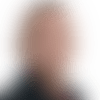The Houston Texans couldn't afford to maintain the status quo during the offseason when it came to protecting their franchise quarterback Deshaun Watson.
Watson took a beating in 2018 and was sacked a league-high 62 times and opponents hit him 126 times.
To address a front-five unit ultimately responsible to protect the quarterback, the Texans used the draft to bolster the ranks with the selections of offensive tackles Tytus Howard in the first round and Max Scharping in the second round.
Watson clearly approved of the moves.
"We just find ways to get better," Watson said, via Aaron Wilson of the Houston Chronicle . "The front office knows exactly what they want, what they want to do with the organization and what we need to do to try to take that next step. I knew exactly what they were going to do in the draft, and what they want to do in the future.
"We drafted two young guys who can come in and compete and love football and want to come in and learn. They're going to have an opportunity to come in and learn from the veteran guys and continue to try to make us better."
The Texans began the rebuilding process on the offensive line during free agency by signing left tackle Matt Kalil and bringing back right tackle Seantrel Henderson.
The offseason moves to solidify the offensive line more than made sense when considering as Watson goes, so goes the Texans' offense.
With Howard and Scharping, the Texans have two rookies with versatility to play different positions on the offensive line, a plus on any NFL team.
"We have to have guys that can be bodyguards for Deshaun Watson, man, and you're going to be that guy," O'Brien told Howard.












